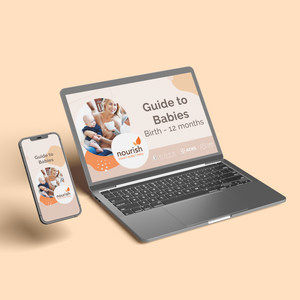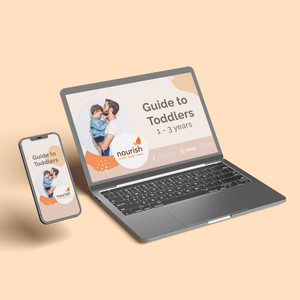Key Points
- Correct latching is crucial for successful breastfeeding, as a poor latch can lead to various issues such as breast and nipple pain, cranky baby, poor weight gain, and milk supply problems
- Breastfeeding should not cause pain, so mothers experiencing discomfort despite being told their baby's latch is good should seek a second opinion
Learning how to latch your baby to your breast – correctly, is critical. A poor latch can result in all sorts of problems including breast and nipple pain, a cranky baby – because he’s not getting enough milk, followed by poor weight gain and subsequent milk supply issues.
Before you leave the hospital, you should be shown how to check that your baby is latched properly, and that he is actually getting milk from the breast.
Breastfeeding is not meant to hurt, so if you are told your baby’s latch is good despite having sore nipples, ask for a second opinion.
In saying this, understanding what “a correct latch” looks like (and how to achieve it) in advance of baby’s arrival, will increase your chances of achieving immediate success.
Here's a Step-by-Step Guide to Get a Correct Latch Breastfeeding:
Position yourself comfortably with back support, pillows supporting your arms and/or in your lap. You don’t need a fancy chair to breastfeed in – it’s about finding a position that’s comfortable to you.
Bring your baby nice and close to you, supporting her behind her shoulders not her head. Position baby so her mouth and nose are about the same level as your breast.
Encourage her to open her mouth wide, by brushing your nipple and areola against her mouth.
Bring your baby to your breast, not breast to baby. As she opens her mouth wide, aim the nipple towards the roof of her mouth and bring her mouth up and over the breast. The first point of contact should be her lower jaw.
Remember you’re both learning so it’s normal to feel awkward at first.
To check that your baby is attached well, look for these signs:
- Chin is pressed into the breast and nose is clear.
- Mouth is open wide and lips are flanged (protruding out on to the breast).
- Baby has a ‘good mouthful’ of the areola in her mouth.
- There is no pain.
- She is not sucking in air or slipping off the breast.
- Her cheeks are not hollow as she sucks.
After feeding, check your nipples for signs of stress, such as red stripes or a squashed look. If you have these signs, double check that your baby has latched on correctly during your next feed.
For more breastfeeding advice, you may like to purchase our Guide to Feeding Success Course.
Our Products
-

01. Guide to a Healthy Pregnancy
$55 -

02. Positive Birthing Course
$55 -

03. Infant Feeding Guide
$55 -

04. Baby Sleep Guide - First 12 Months
$55 -

05. Toddler Parenting Course 1 - 3 Years
$55
-
 When to Start Antenatal Classes?
When to Start Antenatal Classes?
Becoming a parent is an incredible milestone, but it comes with a host of changes that can be daunting, especially for first time parents. Antenatal classes are all about offering expectant parents the education they need to make informed decisions, look after their bodies and care for their newborn babies. While you probably already have a long list of things you need to accomplish during your pregnancy, it’s a good idea to make time to attend antenatal classes.
-
 Development Milestones 4-8 Months
Development Milestones 4-8 Months
As they reach the middle of their first year, you'll start to see bigger leaps in their growth and ability!
In this article, we’re going to discuss your baby’s developmental milestones between 4-8 months, and what you can expect along the way.





 When to Start Antenatal Classes?
When to Start Antenatal Classes?
 Development Milestones 4-8 Months
Development Milestones 4-8 Months








